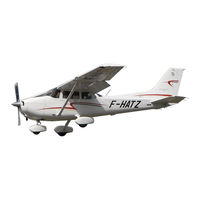User Manuals: Cessna 172S Skyhawk Engine Aircraft
Manuals and User Guides for Cessna 172S Skyhawk Engine Aircraft. We have 6 Cessna 172S Skyhawk Engine Aircraft manuals available for free PDF download: Pilot Operating Handbook, Operating Handbook, Quick Reference Handbook
Cessna 172S Skyhawk Pilot Operating Handbook (498 pages)
FAA Approved Airplane Flight Manual
Table of Contents
Advertisement
Advertisement
Advertisement





